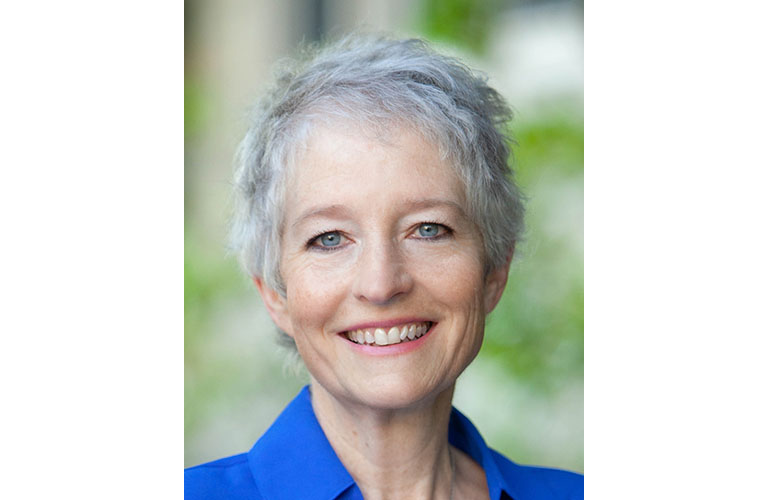Signia Rated Superior to Competing Products for Music Sound Quality
Matthias Froehlich PhD, Veronika Littmann PhD, Jonathan Vaisberg PhD Candidate, Paula Folkeard AuD, Vijay Parsa PhD, Susan Scollie, PhD

Considerable attention is devoted in hearing aid design to obtain signal processing that can optimize speech understanding for a wide range of listening situations. In recent years, research and development also has been devoted to algorithms and features which reduce listening effort and listening fatigue, and enhance the overall listening experience. It is important, however, that as this advanced processing is put into place, excellent sound quality is also maintained. This is particularly important for the quality of music, which because of the dynamics of the signal, easily can be distorted by hearing aid signal processing.
Nearly everyone enjoys listening to music, which can have a significant effect on one’s emotions—it can create a smile or bring tears. For most, music is a part of our everyday life. And listening to music is good for you too! Research has shown that music can fight depression, reduce anxiety and boost the immune system. The enjoyment of music, however, will be reduced if it is not of satisfactory fidelity.
As we have discussed in a separate paper (Froehlich et al, 2017), it is possible today to directly stream music to hearing aids. However, the majority of hearing aid users continue to listen to music in the more traditional manner, delivered via a loudspeaker in their home, car, public gathering, or a specific music venue. The purpose of this research, therefore, was to examine the quality of music when processed by different premier hearing aids from four different leading manufacturers. More specifically, we studied quality ratings for different genres of music, and the quality rating differences for the “universal program” vs. the “music program” for each respective hearing instrument.
The research reported here was conducted at the laboratories of the National Centre for Audiology at Western University, London, Ontario. There were 26 participants, 20-84 years of age (mean age of 70.8 years); 15 males and 11 females. All participants had bilateral symmetrical sensorineural hearing loss, with a mean hearing loss ranging from 35-40 dB in the low frequencies to 65-70 dB in the high frequencies (see mean audiograms and range of hearing loss for the right and left ear in Figure 1).

The hearing aids used in this study were Signia Pure 7px, and premier hearing aids (May, 2017) of three other leading manufacturers.
The hearing aids were programmed for each participant’s hearing loss based on each manufacturer’s proprietary fitting formula. The Signia and two of the other products were programmed with a universal program and a music program (as recommended by the manufacturer). The product of Manufacturer A did not offer a music program in the fitting software, and therefore only one program, the universal program, was used for all recordings.
Following the specific programming for each participant, the hearing aids were fitted to the Bruel and Kjaer Head and Torso Simulator manikin using double dome earpieces for the recording of the music. The music was delivered via a loudspeaker located at a 0 degree vertical and horizontal azimuth from a distance of 76 cm. The music was recorded for both the universal and the music programs (except for the product of Manufacturer A; the universal program was copied for this instrument to be later compared to the music program of the other products).
Five different music pieces were recorded. Four were of the genres of classical, jazz, folk and pop. For the 5th selection, each participant was asked to name a “favorite musical piece.” This song was then obtained from iTunes and converted to a .wav file.
The participant-specific recorded samples were entered into the software of the MUSHRA (MUltiple Stimuli with Hidden Reference and Anchor); methodology especially designed for the subjective assessment of audio quality. The participants listened to the different music samples via insert earphones. Using a laptop computer and mouse, they were instructed to adjust the loudness of each sample prior to the actual test to a comfortable level, and then compare the four different samples (A, B, C, D).

Figure 2 is an example of the MUSHRA software – note that the hidden reference and anchor are not discussed further in this paper. The designator for each product (A, B, C, etc.) was randomly re-assigned after each comparison. That is, the Signia primax might have been product “A” for folk music, but product “D” for classical.
The participants were encouraged to go back and forth among samples before reaching a final rating decision for each one. The ratings for each sample was then determined by using a vertical slider on a 5-point scale, ranging from “Bad=0” to “Excellent=100” (see example of MUSHRA software in Figure 2). The stop point of the slider resulted in a numerical 0 to 100 value for each sample, used for later analysis. Using this technique, each of the 26 participants compared the four products to each other for each of the five music samples first for the universal program and then again for the music program (universal program for Manufacturer A).
Figure 3 shows the mean ratings of the 26 participants, combined for all five sound samples, for the universal and the music program. An advantage for Signia primax is clearly present. For the universal program, the primax rating was more than 10 points higher than the nearest competitor, Manufacturer A. A similar pattern is shown when the music program was compared, except that now Manufacturer C is in second place. Interestingly, while the sound samples for Manufacturer A were the same for both comparisons, the ratings were slightly higher when this product was compared to the other universal programs. The primax ratings were essentially identical for the two different programs, although consider that these programs were not directly compared to each other, and that specific ratings likely were influenced by the other samples within a given comparison group.

ANOVA findings for the data shown in Figure 3 revealed a main effect of hearing aid [F=24.34 (3, 75); p < 0.001]. Bonferroni pairwise comparisons revealed that the primax was significantly (p<.001) superior to all three comparative products (A, B and C).
The data shown in Figure 3 are the combined results of all five music samples. It is possible, however, that the processing of some products might be better for one genre of music rather than another. Figures 4 and 5 show the ratings for the four different types of genre and the participants’ favorite musical piece, for both the universal and the music programs. As with the combined results, a clear pattern emerges—Signia primax is at the top for all categories, for both the universal and the music program. There are some interesting findings for some of the categories. For example, the product of Manufacturer B appears to be particularly disagreeable for listening to jazz, where it was rated nearly 40 points below Signia for both programs. Observe that the product from Manufacturer C was rated quite poorly for most genres in the universal program, but improved significantly when the music program was implemented, although still falling below Signia for most categories.
A statistical analysis of the data shown in Figures 4 and 5 revealed a significant interaction between hearing aid model and music genre [F=3.6 (12,300); p < 0.001]. Bonferroni pairwise comparisons were significant for the following (p<.05):
![Does Genre Matter? ANOVA findings for the data shown in Figure 3 revealed a main effect of hearing aid [F=24.34 (3, 75); p < 0.001]. Bonferroni pairwise comparisons revealed that the primax was significantly (p<.001) superior to all three comparative products (A, B and C).](/wp-content/uploads/sites/137/2017/07/fig4.png)

Listening to music is important for most hearing aid users, and, having a high quality signal is essential. We expect that this emphasis on music fidelity will only increase as more and more baby boomers obtain amplification—a generation who grew up with sophisticated audio systems, appreciating high quality music. Hearing aid signal processing designed to reduce background noise and improve speech understanding can sometimes have the unintended effect of reducing sound quality. It is therefore important to routinely examine the sound quality provided by popular products, which was the purpose of this research.
Using the MUSHRA methodology, samples of music were rated for the premier instrument from four leading manufacturers. Data analysis revealed significantly higher ratings for Signia primax for both the universal program and for the music program. The superiority was present regardless of music genre, or whether the music sample was familiar or unfamiliar.
In previous papers, we have reported independent research findings showing that Signia primax is an industry leader in optimizing speech understanding in background noise, and reducing listening effort. The data reported in this paper clearly reveal that this is accomplished while also achieving the highest sound quality.
Froehlich M. Junius D. Branda E. (2017) A comparison of signal quality of direct streaming hearing aids. Canadian Audiologist, 4 (4).

Dr. Matthias Froehlich is global audiology strategy expert for WS Audiology in Erlangen Germany. He is responsible for the definition and validation of the audiological benefit of new hearing instrument platforms. Dr. Froehlich joined WS Audiology (then Siemens Audiology Group) in 2002, holding various positions in R&D, Product Management, and Marketing since then. He received his Ph.D. in Physics from Goettingen University, Germany.

Veronika Littmann is the team lead of R&D Audiology System Development Team for Sivantos in Erlangen Germany. She holds a PhD in Neurophysiology from Cambridge University where she investigated neural processing of temporal information in complex sounds.

Jonathan Vaisberg is a PhD/MClSc Candidate at the National Centre for Audiology at Western University, London, ON, Canada. Jonathan’s research interests include the impact of hearing loss on music perception, and optimizing hearing aid sound quality for music.

Paula Folkeard is a Research Manager and Audiologist at the National Centre for Audiology. She coordinates projects with the hearing aid industry through the Translational Research Unit and is a member of the Innovations in Hearing Technologies and the Hearing Aid Technologies and Outcomes Labs within the NCA. Her research interests are adult amplification, outcomes measurement, and product and procedure validation.

Vijay Parsa, Ph.D. is an Associate Professor at the National Centre for Audiology/Faculties of Engineering and Health Sciences. Western University. His research interests are in speech signal processing with applications to hearing aids, assistive listening devices, and augmentative communication devices.

Susan Scollie, Ph.D. is a Professor at Western University’s Faculty of Health Sciences, School of Communication Sciences and Disorders, and is the Director of the National Centre for Audiology. She leads the team responsible for DSL who won a Governor General’s Award for being the first pediatric hearing aid prescription. Her research interests are efficacy of hearing aid signal processing, outcomes for infants, children, and adults who use hearing aids, hearing aid verification strategies, and simulation in education.